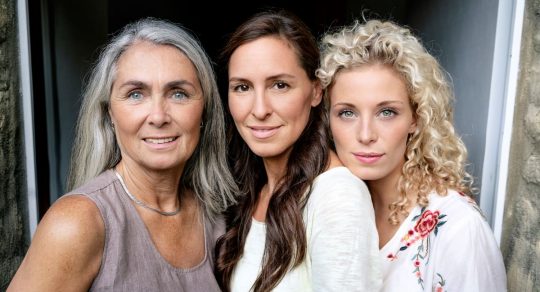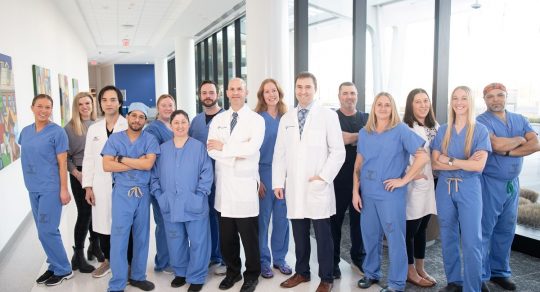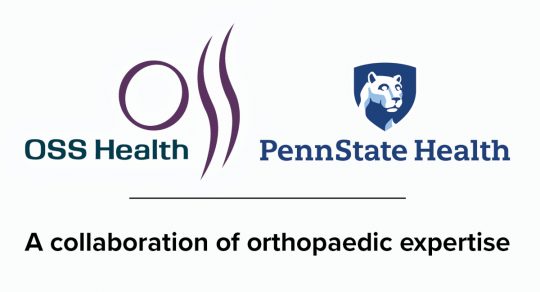Fellowship
Orthopaedic Trauma
The Orthopaedic Trauma Fellowship at Penn State Health Milton S. Hershey Medical Center is a one-year, ACGME-accredited program that admits one fellow per year.
Explore More
The Orthopaedic Trauma Fellowship is designed to prepare an orthopaedic surgeon for a career at a Level I trauma center, either university- or community-based. The focus of the faculty is on the teaching of how to think about, plan for and execute the care of an injured patient. The emphasis is on the understanding of the basic concepts (physiologic, anatomic, biomechanical) underlying what surgeons do in the operating room. The program believes it is the understanding of these concepts that will allow the future traumatologist to adapt to new clinical scenarios and technologies as they present themselves.
Penn State Health Milton S. Hershey Medical Center is the tertiary referral center for both adult and pediatric Level I trauma in southcentral Pennsylvania. An extensive referral network for complex pelvis and acetabular fractures as well as complex periarticular fractures and nonunions has been established over the last 15 years, extending through the entire central corridor of Pennsylvania. Trauma exists as a separate division within the Department of Orthopaedics and Rehabilitation.

Program Overview
Only one fellow will be accepted per year, yielding a rich experience in all areas of orthopaedic trauma, including pelvis and acetabulum/difficult periarticular and long bone fractures; upper extremity and foot/ankle fractures. The fellowship requires four to five nights of call per month with attending backup.
In addition, the fellow will be exposed to complex nonunions, bone loss and infections incorporating the use of Ilizarov and Spatial Frames techniques.
The division employs a nurse practitioner in the outpatient setting, as well as a nurse practitioner and physician assistant devoted to patient care on the inpatient floors.
Learn More about the Fellowship
Applicants for the Orthopaedic Trauma Fellowship must be board-eligible in orthopaedic surgery and have completed an accredited residency in orthopaedic surgery.
Those interested in applying for the Orthopaedic Trauma Fellowship at Penn State Health Milton S. Hershey Medical Center must apply through the Orthopaedic Trauma Association website.
Current Fellow

PGY-6 Fellow, Orthopaedic Trauma Fellowship
Leadership


Program Coordinator, Orthopaedic Foot and Ankle Fellowship and Orthopaedic Trauma Fellowship, Orthopaedics and Rehabilitation
Supporting Your Training
Curriculum Details
There is a three-hour teaching conference for the entire trauma division every Monday at 3 p.m. All preoperative and post-operative cases for the week are presented and discussed in depth. The final hour is devoted to a didactic discussion on a trauma topic on a rotating schedule.
There is a one-hour conference on Tuesday morning with Dr. Henry Boateng, in which classic trauma articles on a given topic are discussed.
A trauma journal club is held monthly in the evening following the Monday conference.
There is a monthly orthopaedic morbidity and mortality conference, which incorporates trauma cases. The fellow will be responsible for presenting a grand rounds conference on a topic of their choosing as well as taking responsibility for the resident review on trauma topics for the OITE exam.
Every six weeks there is a sawbones lab, run by Dr. Carol Copeland, for the entire orthopaedic resident group, spanning all the typical topics covered in the AO basic course.
An extensive and well-funded orthopaedic basic science laboratory is housed on the same floor as the trauma division. Biomechanical studies can be designed and executed with the aid of a faculty biomechanical engineer (Gregory Lewis, PhD). The fellow is expected to either initiate, or become involved with, a clinical or basic science research project and produce a paper of publishable quality upon completion. Protected time for the fellow to pursue this research is provided.
The Division of Orthopaedic Trauma employs two full-time research coordinators to facilitate the initiation and execution of clinical studies via IRB preparation and database management. Department funding for project initiation is available through the Orthopaedic Initiation Grant. Current projects include the genomics of atypical bisphosphonate fractures, the modulation of trauma related disuse osteopenia, the biomechanics of locking screw constructs and cognitive simulation in fracture repair.
Penn State Health is a core center for METRC studies (Major Extremity Trauma Research Consortium), a Department of Defense-funded multicenter research effort coordinated through the Johns Hopkins School of Public Health. The organization is currently enrolling patients in the FIXIT, TAOS, PovIV, VANCO and PAIN trials.
Fellow case volume (averaged last five years):
Pelvis: 35 to 40 cases
Acetabulum: 35 to 45
Calcaneus: 22 to 25
Talus: 20 to 25
Tibial Plateau: 35 to 45
Pilon: 25 to 30
Complex UE: 22 to 27
Ilizarov/TSF: 25 to 30
Nonunions: 22 to 30 (overlaps with Ilizarov/TSF)
Resident Honors and Recognitions
Penn State College of Medicine and Penn State Health Milton S. Hershey Medical Center accept ongoing nominations for the Exceptional Moments in Teaching award.
The award, given monthly by the Office for a Respectful Learning Environment, accepts nominations from College of Medicine students who are invited to submit narratives about faculty members, residents, fellows, nurses or any other educators who challenge them and provide an exceptional learning experience. See more about the award here.
Previous nominees from the Orthopaedic Trauma Fellowship are listed here.
Contact Information
Mailing Address
Department of Orthopaedics and Rehabilitation
Attn: Joelle Hoke
Penn State Health Milton S. Hershey Medical Center
EC089
30 Hope Dr., Building A
P.O. Box 859
Hershey, PA 17033
General Contact Information
Phone: 717-531-7654
Fax: 717-531-0498
Email: jhoke2@pennstatehealth.psu.edu



